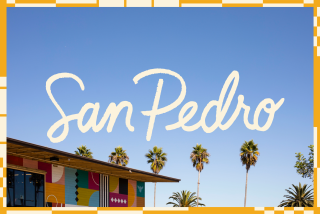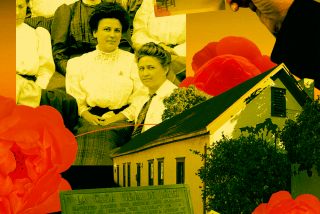They Built an Outpost of Valley History
- Share via
Peering out from stagecoach windows, weary travelers making their way from Los Angeles to San Francisco in the mid-1800s would come upon a welcome sight when they reached the northeast San Fernando Valley.
Situated among the cattle and wild mustard was Lopez Station, where the stage stopped twice a week until 1874, when it was replaced by the railroad.
In 1861, Geronimo and Catalina Lopez purchased 40 acres near the San Fernando Mission and built a large adobe home along the Butterfield Stage Line.
There, the couple opened a general store and the Valley’s first post office. Lopez Station, as the adobe came to be known, also was home to the Valley’s first English-speaking school. The first local newspaper, the San Fernando Times, was printed at the adobe in 1889.
With 13 Lopez children, the station could get quite busy at times. A gracious hostess, Catalina Lopez adorned her dining room table with fresh fruit and flowers that she grew.
But even before Lopez Station, Geronimo Lopez earned his place in the history books: As a 16-year-old messenger for Gen. Andres Pico, Lopez delivered the Articles of Capitulation to Gen. John C. Fremont, which ended hostilities in California between Mexico and U.S. forces led by Fremont.
Lopez was the son of Pedro Lopez, who was once mayordomo of the mission and nephew of Francisco Lopez, who discovered gold in Placerita Canyon in 1842.
In 1882-83, Catalina’s brother, Valentin, built the couple a two-story adobe in San Fernando that would become the historic Lopez Adobe. (Opened to the public in 1975, the adobe has been closed recently for earthquake repairs but could reopen later this year.)
The couple lived out their lives at the adobe. Catalina died in 1918, followed by Geronimo in 1921.
More to Read
Sign up for The Wild
We’ll help you find the best places to hike, bike and run, as well as the perfect silent spots for meditation and yoga.
You may occasionally receive promotional content from the Los Angeles Times.






